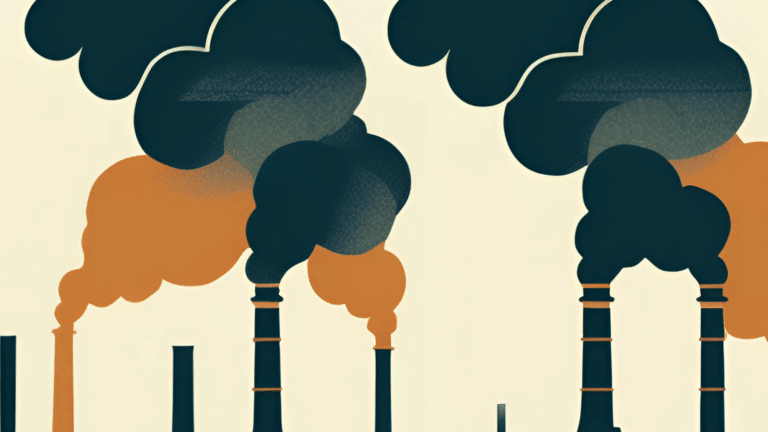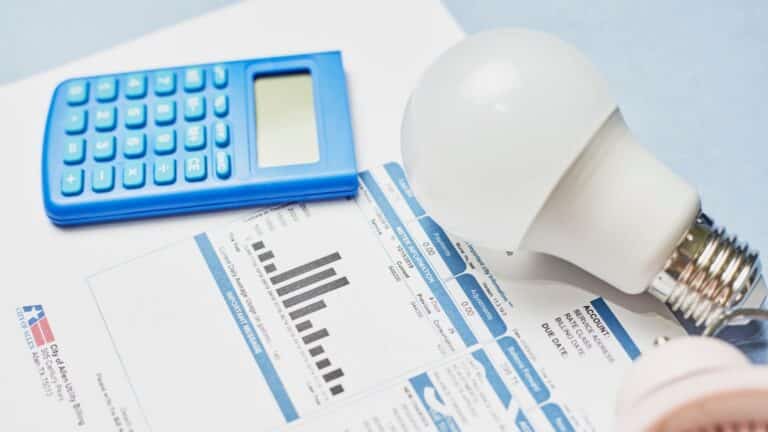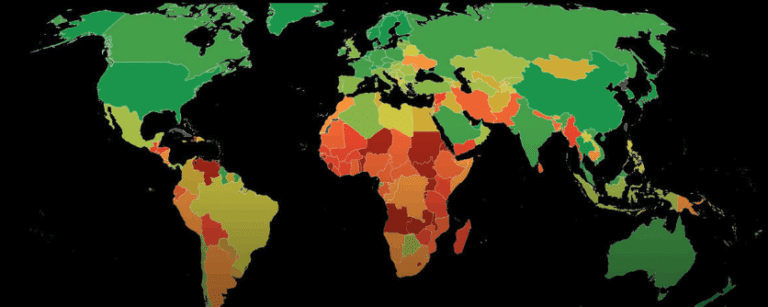Pétrole : la gueule de bois des Etats-Unis
A l’encontre de la volonté affichée par Donald Trump de doper la production d’hydrocarbures aux Etats-Unis, plusieurs producteurs de...-Matières premières
Current Access Level “I” – ID Only: CUID holders, alumni, and approved guests only
Insights from the Center on Global Energy Policy
This Energy Explained post represents the research and views of the author. It does not necessarily represent the views of the Center on Global Energy Policy. The piece may be subject to further revision. Contributions to SIPA for the benefit of CGEP are general use gifts, which gives the Center discretion in how it allocates these funds. Rare cases of sponsored projects are clearly indicated.
For a full list of financial supporters of the Center on Global Energy Policy at Columbia University SIPA, please visit our website at Our Partners. See below a list of members that are currently in CGEP’s Visionary Circle. This list is updated periodically.
Long before crowdsourcing became a worldwide phenomenon, “Harambee” (“pulling together”) was the Kenyan national motto. In postcolonial Kenya, fundraising became a way to build schools and hospitals and pay school fees for bright low-income students. Today’s African cooperatives are a logical offshoot of this traditional fundraising. Starting off as avenues to assist small-scale farmers market various cash crops, the cooperative movement has evolved from basic savings clubs, stokvels in South Africa[1] and chamas in Kenya,[2] to Savings and Credit Cooperative Organizations (SACCOs) covering many sectors of the economy.[3]
In this article, the author argues that cooperatives and other models of local funding, such as pension funds, can help meet the growing energy needs of African populations.
In Africa, national energy utilities are hampered in their ability to finance the rollout of power infrastructure at the necessary speed and scale given the requirement to provide guarantees to independent power producers (IPPs). This has often resulted in corporates installing standby diesel generators, rooftop solar, or, for creditworthy companies, corporate IPP arrangements as a way to guarantee uninterrupted power supply—contributing to an erosion of the financial viability of state-owned utilities.[4]
There has been a mix of responses to this state of play. The South African government has come up with the bold step of enabling private sector investment in new generation, breaking the monopoly of Eskom, the country’s power utility. It has removed the generation licensing requirement and allowed independent power producers to sell directly to buyers, using the existing transmission and distribution network. In Kenya, the government has published draft regulations, “Bulk Supply and Open Access,” which will allow private investors to develop generation assets and sell electricity directly to creditworthy industrial customers. This will increase competition for the majority state-owned utility Kenya Power and Lighting, with distribution losses running at 23%.[5]
Some argue that service in private hands could compromise the government’s ability to supply electricity to rural communities that do not have large industrial needs. As of now, energy access in most African countries is concentrated in urban areas, where the population density allows for the ability to connect multiple households at a low cost. But the same argument was used 30 years ago when private mobile phone operators began to compete with the incumbent state-owned telco. As it turned out, these newly licensed operators increased the penetration of mobile phones.[6] Initially starting with customers who could afford the services, the network soon expanded, devices became cheaper, and local entrepreneurs developed new products.
Without a doubt, the delivery of mobile phone services to far-flung rural areas is not the same as laying transmissions lines. But could there be alternatives to transmission lines, such as mini-grids?
Before the Kenyan government embarked on its successful “Last Mile” project, which lead to an increase of energy access from 25% to 75% in eight years, fundraising was the only way rural communities had to pay the cost of grid connection. Still, only 67% of rural areas are able to access electricity compared to almost all of urban Kenya—a gap that can potentially be addressed by rural electric cooperatives. Africa can draw lessons from the experience of the United States, especially as the similarities will only increase as the continent becomes more urbanized. In 1942, the United States formed the National Rural Electric Cooperative Association (NRECA) to represent the interests of over 900 electric cooperatives across the country. NRECA today powers 56% of the US land mass and provides electricity to 42 million customers. In Kenya, SACCOs—with a total of US $6 billion in savings or deposits in 2022—are already operating on a large scale, controlling public transport and holding a large stake in the local real estate market. With the right training and exposure, these can be a driving force in universal rural electricity access.
Recently, Kenya’s Retirement Benefits Authority allowed pension funds to invest 10% of their funds in infrastructure. So far, through the Kenya Pension Fund Investment Consortium, the funding has been directed only to road annuity projects, but electricity is now on the radar.[7] In addition, the funds are in local currency and could cushion the recipients of this electricity infrastructure against foreign exchange shocks and offer predictable power costs for households as well as small and medium-size enterprises.
Africa 50, established by African governments and the African Development Bank to help bridge Africa’s infrastructure funding gap, has put forth two new structures to mobilize capital that can also be applied to energy infrastructure: public-private partnerships (PPP) and asset recycling. In a PPP, a private investor designs, constructs, and operates the infrastructure, while the government can provide land and off-takes the service. The first PPP transaction to have closed is for construction of transmission lines in East Africa. The project entails the development, financing, construction, and operation of the 400 kilovolt Lessos-Loosuk and 220 kilovolt Kisumu-Musaga transmission lines under a PPP framework. Once the project is completed, it will serve as a template for the development of key electricity infrastructure by private sector. The Senegambia bridge is an example of asset recycling, or refinancing of government-financed infrastructure. This asset recycling allows capital with long time horizons to invest in annuity, providing infrastructure while avoiding performance risk during the planning and construction phase. This structure requires a strong regulatory environment[8] to allow long-term investors to recoup their investment cost. With pension funds’ long investment horizons, this asset class could prove attractive.
The retail oil industry is another example of private sector investment in the energy sector. There are filling stations almost everywhere roads are found on the continent, to fuel public and private transport, including the ubiquitous two- and three-wheelers that ply African roads, as well as to supply diesel to power the 120 gigawatts of primary and standby generators[9] and kerosene required for lighting. All this infrastructure has been built mainly by the private sector and with no government guarantees. Distributed power can be seen as analogous to this. Distributed power, such as mini-grids, can provide the much-needed energy to power irrigation, basic agri-processing, and internet-enabled devices for education and telemedicine.
With COP28 firmly in the rear-view mirror, one can’t help but reflect on the various pledges that have been made by industrialized economies[10] to developing countries to help meet their energy transition goals. Copenhagen COP’s US $100 billion and the Loss and Damage Fund that emerged at COP26 in Glasgow,[11] though well-intentioned initiatives, may be proving a distraction when urgent new thinking is required to meet the energy needs of the millions that don’t have access to electricity and clean cooking fuels. The same populations that lack access are suffering disproportionately from the ravages of climate change. While African governments are grappling with the challenge of developing critical energy infrastructure to fuel industrial development, the continent is also having to deal with the ravages of extreme weather, flooding, and prolonged droughts. These emergencies take valuable resources from infrastructure development and add to the debt burden.
The Glasgow Alliance for Net Zero indicates the potential to invest more than $130 trillion in the energy transition.[12] Africa must address how to attract both domestic and international private capital. Its energy transition will be funded not through philanthropy and charity but only though commercially viable models for both local, as discussed in this article, and international investors.
CGEP’s Visionary Circle
Corporate Partnerships
Occidental Petroleum Corporation
Tellurian Inc
Foundations and Individual Donors
Anonymous
Anonymous
the bedari collective
Jay Bernstein
Breakthrough Energy LLC
Children’s Investment Fund Foundation (CIFF)
Arjun Murti
Ray Rothrock
Kimberly and Scott Sheffield
[1] https://nasasa.co.za/about-stokvels/
[2] https://ushirika.go.ke/wp-content/uploads/2020/07/history-and-organization-of-cooperative-development-and-marketing-sub-sector-in-kenya.pdf
[3] https://www.un.org/development/desa/dspd/wp-content/uploads/sites/22/2019/06/Otieno.pdf
[4] https://archive.gazettes.africa/archive/ke/2024/ke-government-gazette-dated-2024-02-16-no-19.pdf
[5] https://pressroom.ifc.org/all/pages/PressDetail.aspx?ID=17431
[6] https://www.proparco.fr/en/article/mobile-phones-markets-and-firms-sub-saharan-africa
[7] https://iea.blob.core.windows.net/assets/5afce034-9bd7-451a-ac36-1b35c63aaf5e/FinancingCleanEnergyinAfrica.pdf
[8] https://impactalpha.com/102564-2/
[9] https://www.ifc.org/content/dam/ifc/doc/mgrt/20190919-full-report-the-dirty-footprint-of-the-broken-grid.pdf, https://www.woodmac.com/horizons/utility-3.0-how-africa-is-remaking-the-grid/
[10] https://www.reuters.com/business/environment/rich-countries-failed-meet-their-climate-funding-goal-2022-07-29/
[11] https://www.lossanddamagecollaboration.org/pages/what-is-the-glasgow-dialogue-on-loss-and-damage
[12] https://www.gfanzero.com/press/amount-of-finance-committed-to-achieving-1-5c-now-at-scale-needed-to-deliver-the-transition/
The Trump administration may release a blueprint for a US sovereign wealth fund (SWF) in early May after the president signed an executive order in February giving the Secretary of the Treasury and the Secretary of Commerce 90 days to develop a plan.

President Donald Trump has made energy a clear focus for his second term in the White House. Having campaigned on an “America First” platform that highlighted domestic fossil-fuel growth, the reversal of climate policies and clean energy incentives advanced by the Biden administration, and substantial tariffs on key US trading partners, he declared an “energy emergency” on his first day in office.

Kenya and South Africa have recently started moving toward an open access regime in their electricity sectors, while the US and India have been on this path for over two decades.

The world has committed to transitioning away from fossil fuels to avoid the most severe threats of climate change.


This report explores how residents of North Lawndale, a predominantly Black and historically under-resourced neighborhood on Chicago’s West Side, experience the compounded effects of heat waves and power outages.

